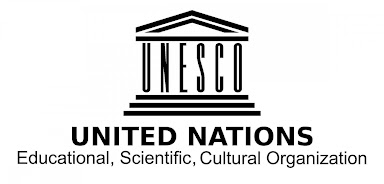The Role of Cultural Diplomacy in Promoting International Cooperation and Conflict Resolution
In today's interconnected world, fostering cooperation and resolving conflicts between nations are paramount for global stability and progress. One of the most effective tools in achieving these goals is cultural diplomacy. This article delves into the significance of cultural diplomacy in promoting international cooperation and conflict resolution, exploring its mechanisms, examples, challenges, and future prospects.
Introduction to Cultural Diplomacy
Cultural diplomacy is the practice of using cultural interactions, such as art, language, music, and heritage, to foster understanding and build relationships between nations. Unlike traditional diplomacy, which primarily focuses on political and economic negotiations, cultural diplomacy emphasizes soft power and people-to-people connections.
Cultural Diplomacy in International Cooperation
Soft Power and Cultural Exchange
Cultural diplomacy leverages a nation's soft power – its ability to influence others through attraction and persuasion rather than coercion or force. By showcasing its cultural richness and values, a country can enhance its reputation and forge positive relationships with other nations.
Building Bridges Between Nations
Through cultural exchange programs, countries can promote dialogue and collaboration in various fields, including education, science, and the arts. These exchanges facilitate mutual learning, foster empathy, and strengthen diplomatic ties.
Cultural Diplomacy in Conflict Resolution
Fostering Mutual Understanding
Cultural diplomacy plays a crucial role in breaking down stereotypes and fostering mutual understanding between conflicting parties. By highlighting shared cultural heritage and promoting dialogue, it can mitigate tensions and pave the way for reconciliation.
Addressing Stereotypes and Misconceptions
Cultural diplomacy challenges prevailing stereotypes and misconceptions by promoting authentic representations of different cultures. By showcasing diverse perspectives and narratives, it encourages empathy and promotes peaceful coexistence.
Examples of Successful Cultural Diplomacy
UNESCO and World Heritage Sites
UNESCO's World Heritage program promotes cultural diplomacy by recognizing and preserving sites of outstanding universal value. These sites serve as symbols of shared humanity and contribute to cross-cultural dialogue and cooperation.
Cultural Exchange Programs Between Countries
Numerous cultural exchange programs, such as the Fulbright Program and the British Council's Cultural Diplomacy initiatives, facilitate dialogue and collaboration between nations. These programs promote mutual understanding and foster lasting partnerships.
Challenges and Limitations of Cultural Diplomacy
Political Constraints
Cultural diplomacy is often subject to political agendas and may be used as a tool for propaganda or image-building. Political tensions and conflicts can hinder the effectiveness of cultural exchange initiatives and limit their impact.
Cultural Barriers
Differences in language, religion, and customs can pose challenges to effective cultural diplomacy. Misinterpretations or cultural misunderstandings may arise, leading to communication breakdowns and diplomatic tensions.
Future Prospects of Cultural Diplomacy
Technological Advancements and Globalization
Advancements in technology, such as digital media and social networking platforms, are transforming the landscape of cultural diplomacy. These tools enable broader reach and more direct engagement, transcending geographical barriers and fostering virtual cultural exchanges.
Potential for Peace-Building Initiatives
In an increasingly interconnected world, cultural diplomacy holds immense potential for promoting peace-building initiatives. By fostering dialogue, empathy, and mutual respect, it can contribute to conflict prevention and resolution on a global scale.
Conclusion
Cultural diplomacy serves as a powerful instrument for promoting international cooperation and conflict resolution. By fostering mutual understanding, breaking down barriers, and building bridges between nations, it contributes to a more peaceful and interconnected world.








Comments
Post a Comment